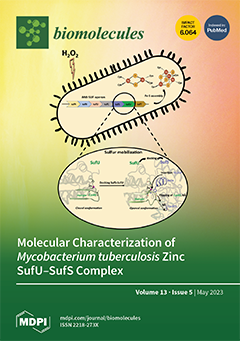Forkhead box (FOX) proteins are a wing-like helix family of transcription factors in the DNA-binding region. By mediating the activation and inhibition of transcription and interactions with all kinds of transcriptional co-regulators (MuvB complexes, STAT3, β-catenin, etc.), they play significant roles in carbohydrate
[...] Read more.
Forkhead box (FOX) proteins are a wing-like helix family of transcription factors in the DNA-binding region. By mediating the activation and inhibition of transcription and interactions with all kinds of transcriptional co-regulators (MuvB complexes, STAT3, β-catenin, etc.), they play significant roles in carbohydrate and fat metabolism, biological aging and immune regulation, development, and diseases in mammals. Recent studies have focused on translating these essential findings into clinical applications in order to improve quality of life, investigating areas such as diabetes, inflammation, and pulmonary fibrosis, and increase human lifespan. Early studies have shown that forkhead box M1 (FOXM1) functions as a key gene in pathological processes in multiple diseases by regulating genes related to proliferation, the cell cycle, migration, and apoptosis and genes related to diagnosis, therapy, and injury repair. Although FOXM1 has long been studied in relation to human diseases, its role needs to be elaborated on. FOXM1 expression is involved in the development or repair of multiple diseases, including pulmonary fibrosis, pneumonia, diabetes, liver injury repair, adrenal lesions, vascular diseases, brain diseases, arthritis, myasthenia gravis, and psoriasis. The complex mechanisms involve multiple signaling pathways, such as WNT/β-catenin, STAT3/FOXM1/GLUT1, c-Myc/FOXM1, FOXM1/SIRT4/NF-κB, and FOXM1/SEMA3C/NRP2/Hedgehog. This paper reviews the key roles and functions of FOXM1 in kidney, vascular, lung, brain, bone, heart, skin, and blood vessel diseases to elucidate the role of FOXM1 in the development and progression of human non-malignant diseases and makes suggestions for further research.
Full article






